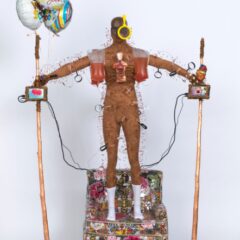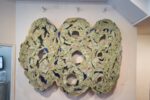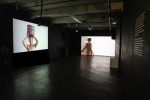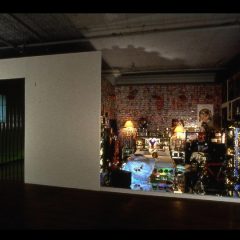This week’s Weekly has my piece (no longer available online) on Pepon Osorio’s Badge of Honor at the Lighthouse. Below is the copy with some pictures. See more photos at flickr.
Insider Art
Pepón Osorio’s work is interventionist and activist.
Tucked into the second-floor meeting room at the Lighthouse community center is a strange installation. Two small chambers—one a prison cell, the other a teenager’s bedroom—have become focal points in the large room usually used for Narcotics Anonymous meetings and City Year teen sleepovers.
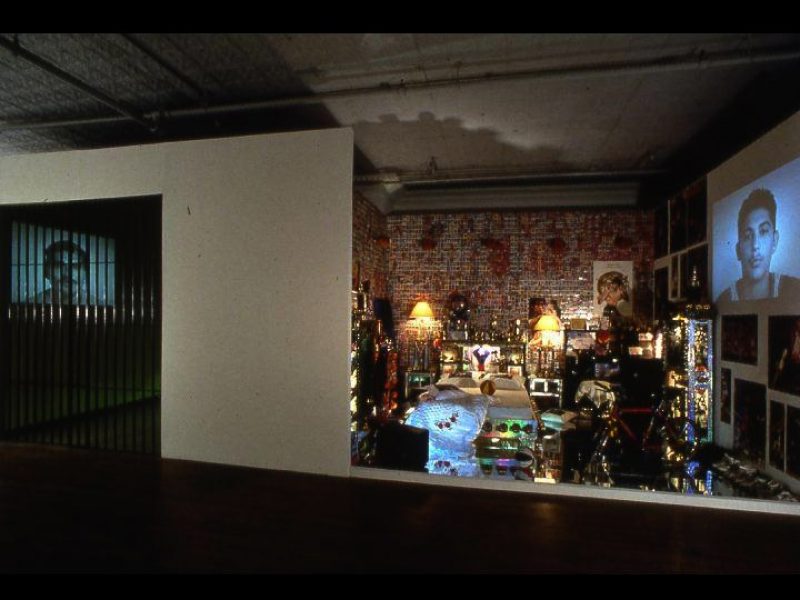
Pepón Osorio’s installation Badge of Honor, which includes video projections of a dialogue between an imprisoned father and his teenage son, is like a theater set—dramatic and a little forbidding. You see the drama slowly unfold as the father breaks down in tears of regret and the son says, “I would be willing to give up anything for you to be home.”
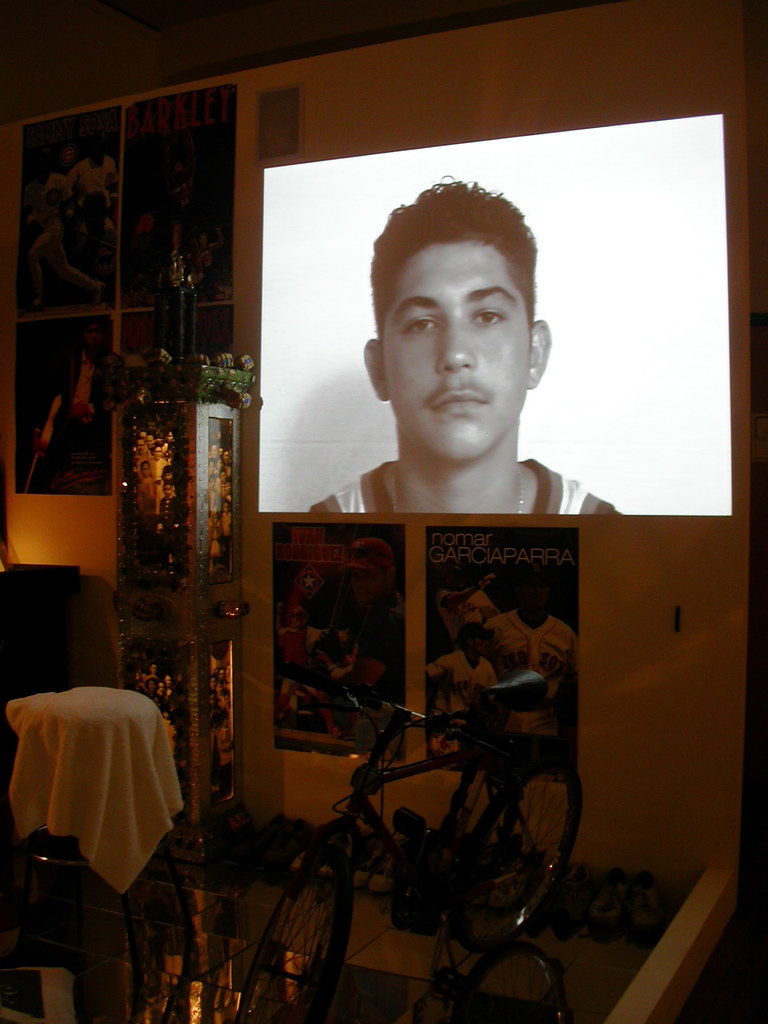
Badge of Honor, a 1995 piece exhibited around the world and now making its Philadelphia debut, is part of a larger art and community project—also called “Badge of Honor”—organized by Osorio, a former social worker and one-time artist in residence at the Philadelphia Department of Human Services.
“Badge of Honor” the project is a collaboration between Temple University students, families with incarcerated loved ones, Las Gallas artists’ collective, the Lighthouse community center and the Centro Pedro Claver community services agency. Activist and interventionist, “Badge of Honor” seeks to raise discussion about incarceration and its impact on Latino families.
The project also uses interaction between students and families to create art in family homes to honor the missing members and help family members grieve. (The rate of Latino incarceration in Pennsylvania—nine times that of whites—is the highest in the country.)
The Lighthouse, which also houses a Head Start program, sees a steady stream of neighborhood residents throughout the day and night (among other things, it’s a curfew center for teens). Many who pass through are intimately acquainted with prison. More than one has asked the artist why the cell in the installation is so big. (It’s to accommodate the video projections.)
Osorio was in attendance at a recent City Year sleepover in the room. The youngsters were packed in the room but silent as they watched the video projection and heard the father and son speak their sad words. “You could hear a pin drop,” Osorio says.
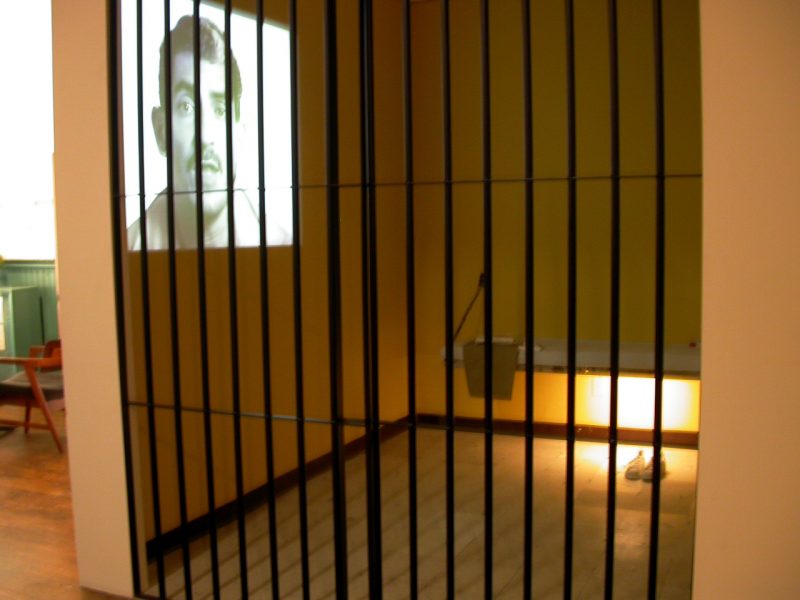
Pepon Osorio, Badge of Honor, detail showing the father
Osorio made the videos by going back and forth between the prison cell and the family home for three weeks. He asked the father, “What do you want to say to your son?” That segment was played to the son, who then responded. As the dialogue goes on and you understand the two speakers can’t see each other, the piece’s great poignance sinks in.
The best way to see the father/son exchange is to place yourself midway between the two rooms at some distance away, says the artist. That way you become part of the piece, the third point of a triangle that connects the two speakers.
Badge of Honor
Through June 8, 2007. Free. Lighthouse, 152 W. Lehigh Ave. 215.425.7800.


